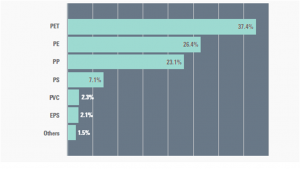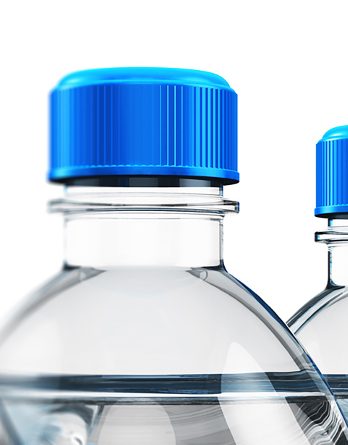US PET packaging market
Set to recover from Covid-19 to face sustainability challenge
by John Nelson, Smithers
Exclusive new data from Smithers show that the North American rigid plastics packaging market will grow by 6.6% to reach a projected $ 42.79 billion in 2021. This marks a return to positive growth following a drop of 1.1% from 2019 to 2020, in a year scarred by the human and economic consequences of the Covid-19 pandemic. New challenges and market opportunities will foster growth across the decade pushing total value forward at a compound annual growth rate of 2.1% to reach $ 47.55 billion in 2026. Smithers’ new report – The Future of Rigid Plastic Packaging to 2026 – shows that at 3.37 million tonnes, PET is the most widely used plastic in this segment in the US.

post-Covid market, there will be many new challenges, especially in sustainability. This trend largely defined design and R&D priorities for much of the second half of the previous decade, and disappeared only temporarily under Covid-19.
The poor perception that plastics have in consumers’ minds is leading brands to and trial alternative formats, such as aluminium cans for mineral waters. Within plastics, the leading contemporary solution is to use greater stocks of rPET in a new generation of packaging, especially beverage bottles. Coca-Cola for example announced in February that it was moving to transition several of its North American product lines to 100% rPET containers across 2021.
This accords with regulatory developments; though for now these are confined to a state-level. As is often the case, California has pioneered green legislation in this area. It has set a requirement for an average of 15% recycled material to be used in beverage bottles by 2023. This will come into effect before targets set by the EU‘s Single-use Plastics Directive 2019/904 – 25% recycled content from 2025. Several other state legislatures, including New Jersey and New York, are now actively considering similar commitments.
Realising the vision of a sustainable, circular economy is a laudable aim, and one that will lean heavily on the PET industry to deliver. This is because mechanical recycling processes and collection infrastructures are more advanced – with California among 10 States of the Union that have bottle deposit schemes in place for PET formats.
The wide use of PET in food and beverage packaging also supports this from a technical and legal perspective. In the US, to be authorised for reuse in such packaging, PET from any facility must have its processes approved via the issuance of a Letter of No Objection from the Food and Drug Administration (FDA).
As Alistair Irvine, senior manager for food contact testing at Smithers, explains: “PET is a great candidate for recycling because it is resistant to the absorption of contaminants from its environment and can also be processed at a high temperature, which enables the effective removal of any contaminants. Whereas polyolefins tend to absorb more contaminants during use and have to be processed at a lower temperature.” This is already being reflected in resin prices, with rPET consistently selling higher than virgin grades. As demand from food brands and other segments, such as personal care, expands over the 2020s there will be further pressure. This will involve brands switching over to PET and increasing their use above levels mandated in state or corporate targets, to compensate for the lack of viable recycled content for other polymers.
In the longer term, heavy investment in chemical recycling – which breaks polymer waste down to its base monomers – has the potential to increase supply for all rigid polymer types. This will take time to come on stream at a commercial level however, and will be available at volume to help deliver on goals with 2025 deadline.

